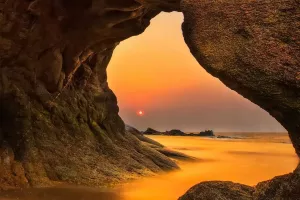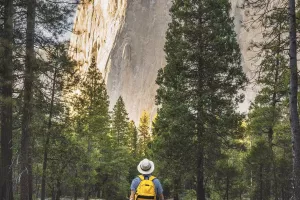The second largest country in the world, Canada is known for its natural beauty and outdoor activities. It’s home to eight distinct forest regions, two mountain regions, volcanoes and the arctic zone. It also happens to be have the world’s largest amount of fresh water lakes, which are spread across all ten provinces and three territories.
1. Moraine Lake; Banff National Park, Alberta
Nestled in the Valley of the Ten Peaks, Moraine Lake in Banff National Park has to be one of the most iconic – and most photographed – lakes in the world. This picturesque lake is found in the Valley of the Ten Peaks and is famed for amazing surroundings and its sapphire-blue water. Visit on a still day and the glassy water provides a perfect reflection of the surrounding peaks. However, Moraine Lake’s turquoise water freezes in winter and usually does not start thawing until June. If you visit the lake in the winter then there are still plenty of interesting photo opportunities for you.
2. Garibaldi Lake; Garibaldi Provincial Park, British Columbia
This turquoise coloured alpine lake lies in the Garibaldi Provincial Park at an elevation of 1,484 metres above sea level. It’s a stunning lake that is surrounded almost entirely by mountains that reflect into the mirror-like water. Garibaldi Lake stretches for over 990 hectares between Whistler and Squamish. It’s only accessible by hiking along the nearly nine-kilometre Garibaldi Lake Trail. Visit in the winter and enjoy backcountry skiing or snowshoeing while being mesmerised by the lake’s beauty. Throughout the rest of the year, go hiking and enjoy the meadows, flowers, and waterfalls.
3. Lake Louise; Banff National Park, Alberta
If there was any contender to Moraine Lake’s crown as the most picturesque, it would be . This enduring favourite in Banff National Park is as famous for the Fairmont Hotel as for the stunning mountain views and Victoria Glacier. Ranked by CNN as one of the most beautiful places in Canada, Lake Louise is certainly one of the most picturesque lakes in the country. With the alpine lake’s location at the bottom of a cluster of glacier-clad peaks and its glittering turquoise waters, Lake Louise can unsurprisingly be found pictured on a lot of postcards. Lake Louise is a hugely popular Canadian ski holiday destination in winter, with three great ski resorts in the area. If you are skiing at Lake Louise, Mt Norquay or Sunshine Village then you should certainly make the effort to see the lake itself.
4. Emerald Lake; Yoho National Park, British Columbia
July is a good time to visit Emerald Lake, the largest of the lakes in Yoho National Park in the Canadian Rockies. That’s when the emerald green water is at its prettiest. The lake gets its color from the powdered limestone found in the water. The lake is generally frozen over until June, so waiting until July means the color will be at its peak. If you visit in the winter, however, it’s a great place to get in some cross-country skiing.
5. Spotted Lake; British Columbia
Summer is a good time to visit Spotted Lake near Osoyoos in south-central British Columbia. That’s because this lake isn’t your normal colored lake. It’s colored all right, but not from the water. The lake is filled with a variety of minerals. When the water evaporates during the summer, it leaves behind a lake bottom of colorful mineral hues. The minerals leave “spots” on the lake that harden in the summer heat. Unfortunately, you can’t walk on the lake; you must view it from behind a fence.


